Few tech companies are as comfortable taking chances quite like Asus, and the ROG Flow X16 is another example of the firm's innovative spirit. This is a big-screen gaming laptop with a 360-degree rotating display. That kind of design choice might sound unhinged at first, after all it's the kind of movement that's usually found on ultra portables and notebooks for creatives.
Ultimately, however, it does make a surprising amount of sense on a gaming unit. You can use the Flow as a conventional laptop, sure, but it can also twist into a tented position and work like a small TV, so you can play titles with a control pad or watch movies. Move it into tablet position and it's well-suited for creative work or touchscreen games. If you can stomach its size, it could even work for reading.
The design is underpinned with solid internals. Gaming capabilities and processing power come courtesy of the GeForce RTX 3070 Ti coupled with the AMD Ryzen 9 6900HS. With this review we can also see what's good here and consider what's coming down the pipe, because Asus has announced a 2023 refresh of this same laptop model with a few tweaks and improvements.
Specific components aside, the display delivers more versatility than the average gaming laptop, but consequently, the Asus ROG Flow X16 tends to be pricier than some rivals. The model we've reviewed is the ROG Flow X16 GV601RW-M5110X that costs $2,499. That's $100 less than an equivalent Razer Blade 15, but pricier than the MSI Raider GE77, which costs $2,199 with an RTX 3070 Ti.
Look beyond those rigs and you'll find plenty of other conventional notebooks with an RTX 3070 Ti with prices that hover closer to the $2,000 mark.
Features and Design
The convertible mechanism means the ROG Flow X16 is more adaptable than most gaming laptops, and the Asus works well when it comes to movement – the hinges rotate smoothly and have enough resistance to ensure the screen stays firmly in place once it's positioned.
That build quality is evident across the entire notebook. The chassis uses an aluminum and magnesium alloy that's robust, and there's hardly any give in the display. It's a slick-looking laptop, too, thanks to a design that abandons RGB LED lighting for a subtler, industrial feel.
It's undoubtedly impressive, but the convertible design isn't perfect. Because the Flow is 355mm wide and 19.4mm thick, it'll prove cumbersome for lots of people who want to use its tablet mode for gaming, browsing or reading. And at 4.6 pounds on the scales, it's not particularly light – you could feel your arms getting tired sooner rather than later. Also factor in 1.2 pounds for the power brick.
The Flow's size certainly isn't ruinous, and its hybrid hinge adds versatility – but it's not perfect, and don't assume that you're getting a thin, light laptop just because it's a convertible.
Inside, you'll find two PCI-E 4.0 2280 M.2 SSD sockets and two RAM slots, so upgrades are possible. The battery is easy to remove, too, and the wireless card is accessible. That said, it's tricky to get inside – the base panel is secured with thirteen Philips screws and plastic clips.
The Display
Asus says the Flow X16 works well in all sorts of positions, so there's plenty riding on screen quality here. Thankfully, the specs don't disappoint: this 16" panel has a 2560 x 1600 resolution and 16:10 aspect ratio to deliver sharp imagery and extra vertical space. It's a Mini LED screen, too, so it should easily outstrip IPS hardware when it comes to contrast performance.
The 3ms response time is great for most gaming situations short of the most demanding esports titles, and this panel has AMD FreeSync Premium Pro clocked to 165Hz – a figure that will do a good job in single-player titles and mainstream esports games.
Asus claims that this Mini LED display has a peak brightness of 1100cd/m2, and in testing the Flow did hit that lofty target. The SDR mode peak brightness of 543cd/m2 is superb, and it combines with the black point of 0.13cd/m2 for a fantastic contrast ratio of 4,176:1. That's far better than any IPS display, and your games and movies have incredible punch, depth and vibrancy.
The Mini LED hardware has a whopping 512 dimming zones, so you get plenty of control and nuance in HDR media. This is one of the few gaming laptops that will do HDR games and movies justice, and it makes the X16 a tempting option for high-impact gameplay.
The Delta E of 3.06 is fine for gaming and you won't notice any significant accuracy issues, but that figure isn't quite high enough for color-sensitive workloads, like design and photo-editing tasks.
It's a shame, because the Flow's color temperature of 6,422K is excellent, and the screen does a good job with color gamuts. Its sRGB coverage level of 100% at 165.7% volume ensures huge punch in mainstream games, and the screen produced 99.7% of the DCI-P3 space at 117.4%, so every HDR shade will be rendered well.
In the Adobe RGB space the Asus produced 91.1% of the shades required at 114.2%. That figure isn't high enough to handle demanding, color-sensitive workloads – just like the Delta E result. This may be a brilliant screen for games and media thanks to Mini LED technology, but it's not quite there for creative workloads.
Your games and movies will sound great, too, thanks to the quartet of speakers. They're loud, bold, punchy and vibrant, with decent bass that doesn't overwhelm the detailed mid-range. They're easily good enough for gaming and watching media.
This screen outpaces duller displays, it's better than any IPS panel, but it's worth remembering that competitors are also available with OLED options at higher refresh rates, and that the forthcoming Razer Blade 16 will also feature Mini LED displays.
It's also worth holding off for the 2023 model if you'd like a screen upgrade in the Flow. The newer machine retains the 2560 x 1600 resolution and Mini LED design, but Asus now says the panel can soar beyond 1200cd/m2 with 1,024 dimming zones, so expect more nuance and punch – and an upgraded 240Hz refresh rate will be better for esports, too.
Input and Connectivity
We noted that the Flow's external design is a bit inconsistent, and that continues elsewhere. On the Flow's right-hand edge you'll find two USB 3.2 Gen 2 Type-A ports, a microSD slot and the power button, but the button is annoyingly shallow and all of the ports sit towards the front of the rig, so they may end up in the way of your mouse if you're right-handed.
On the left-hand edge there are two USB 3.2 Gen 2 Type-C sockets that support DisplayPort and power delivery, but plenty of space is occupied by the connector for the XG Mobile dock – even though that device isn't available for sale in many markets and none of the 2022 models outstrip the RTX 3070 Ti. It's a waste of space, at least until the XG Mobile 2023 with its RTX 4090 arrives.
The Asus ROG Flow X16 has a webcam with Windows Hello support, but no fingerprint reader. Internally, it's got dual-band 802.11ax Wi-Fi 6E and Bluetooth 5.2, but no wired internet. There's an HDMI 2.1 output for 4K/120Hz and 8K/60Hz gaming, but no Thunderbolt 4. And if you want a laptop for creative work alongside gaming, a full-size SD slot would have been better.
Happily, the 2023 refresh does fix some of these. A move to Intel hardware means one Thunderbolt 4 port will be included, and the webcam gets an upgrade from 720p to 1080p.
You still don't get wired internet on the upgraded model, though, and there's still no fingerprint reader. Some rivals will still be better: the hefty MSI Raider GE77 has an SD card slot, more USB ports and 2.5Gbps Ethernet, and the Razer also has an extra full-size USB port and an SD card slot.
The keyboard could be a bit better. The Flow's buttons have a generous 1.7mm of travel and the keys do impress – they're fast, consistent and robust, even when you're hammering through gameplay.
Negatively, though, the Flow only has single-zone RGB LED lighting and there's no numberpad. And while the trackpad is fine for everyday use, the buttons push down too far – and if you're serious about gaming you should attach a USB mouse anyway.
Performance
The ROG Flow X16 is the most powerful laptop in this range, and it uses the Nvidia GeForce RTX 3070 Ti with a peak power limit of 125W – so its 5,888 stream processors and 8GB of memory can unleash their full potential. If you'd like a deeper dive into this GPU, head over here for our full review.
AMD's Ryzen 9 6900HS is a similarly ambitious part with eight multi-threaded cores alongside base and boost speeds of 3.3 GHz and 4.9 GHz, and our review is available here. Elsewhere, there are no surprises. There's 32GB of dual-channel DDR5 memory clocked at 4800 MHz and a Micron 3400 PCIe 4.0 SSD with solid read and write speeds of 6,549 MB/s and 4,479 MB/s. Our only complaint is that the SSD isn't larger.
The RTX 3070 Ti will play most single-player games smoothly at native resolution and good quality settings – including DLSS and ray tracing. In Assassin's Creed Valhalla at 2560 x 1600 and with Ultra settings enabled the Flow averaged 59 fps, and it hit 64.9 fps in Borderlands 3. In Horizon Zero Dawn at Ultimate settings the Asus returned 69 fps, and in Far Cry New Dawn it topped out at 76 fps.
Head over to Rainbow Six Siege and you'll find an average of 201 fps at 2560 x 1600 and Ultra settings, so there's ample pace here for esports games, too.
The RTX 3070 Ti isn't infallible though. In Red Dead Redemption 2 the Asus only averaged 49 fps with every setting ramped up at 2560 x 1600. That's indicative of the RTX 3070 Ti running out of headroom in really demanding games. And while 49 fps is still playable, you'll have to compromise if you want to run the world's most demanding titles at speeds beyond 60 fps.
That may mean dropping the resolution – the Asus rattled through Red Dead's 1080p Ultra test at 63 fps – or reducing graphics settings. But the RTX 3070 Ti can't compete with GPUs like the RTX 3080 Ti, and it won't tackle every situation without breaking a sweat.
Similarly, you'll have to think twice if you want to use this laptop for some external scenarios. It'll handle esports games on 1080p/360Hz displays, but may struggle at 480Hz. Widescreens and 4K panels will struggle unless you drop quality settings down, too.
As usual, Asus adds extra performance modes through its Armoury Crate app, and switching from the default Performance mode to the Turbo option is an effective way to squeeze a little more from this portable.
In Far Cry: New Dawn the X16's original 76 fps result improved to 82 fps in Turbo mode, and its Assassin's Creed Valhalla result also rose by 6 frames. That Turbo mode added a whopping 9 frames to the rig's Horizon score.
That's great, but it's also the only way that this GPU was able to sometimes match the performance we saw from the RTX 3070 Ti in our review, where it sat alongside an Intel Core i7-12700H. The Asus proved a bit quicker than our review chip in Red Dead 2, for instance, but it was still a bit slower in Horizon and Rainbow Six.
That's no surprise when Intel has long been a better laptop gaming option than AMD, and it may partially explain why Asus has switched to Intel for the X16's 2023 refresh.
Other performance modes impress. The Windows option reduces GPU speed and fan noise but still saw the X16 deliver 77 fps and 59 fps averages in Far Cry and Assassin's Creed at 2560 x 1600. In Silent mode, the X16 still ran through those games at 59 fps and 54 fps.
Those performance modes had a big impact on gaming, but they weren't able to help the Ryzen 9 6900HS reach its full potential.
In Cinebench R23 the X16 returned single- and multi-threaded results of 1,575 and 13,830. Those are great scores, but both sit below the scores extracted from the chip in our review – and both fall behind Intel's Core i7-12700H.
The X16's Matlab R2020 result of 1.506 was about half a second slower than Intel's part, and the X16's PCMark 10 Applications score of 13,237 remains a little behind those other chips. The Asus laptop could only manage 7-Zip compression and decompression results of 51.4MB/s and 666.97MB/s, with both figures a long way short of what this chip can achieve.
The only bright spark came from the Excel test. In this benchmark the Ryzen 9 6900HS outpaced the stock chip thanks to a result of 8.5 seconds, although Intel's silicon was still better.
Switching over to Turbo mode saw the X16's Cinebench R23 multi-core result improved to 14,257, but that's hardly ground-breaking pace – that just brings the Asus in line with how the 6900HS performed in our review, and it's still unable to overhaul Intel. Its revised 7Zip scores of 54.6MB/s and 730.5MB/s are better, but still not hugely impressive.
On the other end of the scale, the Windows and Silent options don't have much impact on CPU performance.
It sounds like quite a poor bill of health for the X16's processor, but that's not strictly true. While it's accurate that the Ryzen 9 6900HS doesn't reach its full potential here and the chip can't compete with the Intel Core i7-12700H, it's still fast enough for every computing, Office tools, mainstream content creation and streaming. You'll only need more power if you want a laptop for 4K video editing and other demanding tasks.
If you are in that position, it's worth shopping around – the MSI Raider GE77 used a Core i9-12900HX, for instance – or waiting for the X16's 2023 refresh.
If you decide to hold out for the upgraded model then you're going to get a huge increase in processing performance thanks to the switch to Intel's Core i9-13900H. The updated GV601VI will also replace the RTX 3070 Ti with the RTX 4070, but don't expect a huge gaming boost there – the newer chip is based on the Ada Lovelace architecture but that model will come with fewer stream processors than the older chip.
Thermals and Battery Life
In its conventional Performance mode the X16 is a decent thermal performer – there's fan noise present, but the Asus's aural output never rose beyond 47db and you just won't notice the noise if you're wearing a headset or if you've got the laptop's speakers turned up to a healthy volume.
During gaming tests in Performance mode the underside and metal around the keyboard became warm, but never dangerously hot.
In Turbo mode the noise levels increased to around 50db and the metal did become warmer, but the noise and heat were never worrying – the X16 is still manageable, which is more than can be said for plenty of other gaming laptops.
Noise levels were moderate in Windows mode, too, and in Silent mode the X16 was extremely quiet – not quite as hushed as that name suggests, but easily quiet enough for low-key, casual gaming.
In processing tasks the X16 was always quiet, which bodes well for content creation on this laptop. In single-core tests, though, the CPU peaked at 4.7GHz – rather than the 4.9GHz that the chip can manage on paper. In multi-core tests it never rose beyond 4.4GHz. Those results aren't dreadful, especially for a relatively slim and quiet rig, but they do explain the 6900HS's faltering benchmarks.
The X16's battery performance was a little better. In an everyday work benchmark with the display at full brightness the Asus lasted for four hours, and that figure extended to 5 hours and 35 minutes with the display at 50% brightness – enough longevity to manage a morning at the office.
More impressively, the Asus played media for more than eight hours with the display at half brightness, which means you'll get beyond lunchtime with this laptop if you're careful about how you use the components.
That's great, but it's business as usual in the gaming test. The X16 has a 90Wh power pack which only lasted an hour while gaming. That's normal for a gaming laptop though, you should stay plugged in if you want to enjoy the rig's full performance.
Wrap Up
Asus has taken risks with the ROG Flow X16, and in several departments those have paid off. The ROG Flow X16's sturdy, good-looking exterior works well as a laptop and as a tented screen. Switch to tablet mode and it's usable for creative work and even as a reading and web-browsing device if you can stomach its size.
The X16's RTX 3070 Ti graphics core is a solid performer 2560 x 1600, and the Mini LED display delivers incredible SDR and HDR performance that makes games and movies pop from the panel.
This Asus ROG laptop suffers a little when it comes to value. Its $2,499 price isn't terrible, but if you're happy to eschew the convertible design and Mini LED display you'll find this speed for around $2,000 elsewhere. You'll even find RTX 3080 Ti laptops at less than $2,750. The Asus also comes with an RTX 3060, but it's still pretty pricey considering its internals.
The future also undermines the X16. If you're willing to wait a few months, the Flow's 2023 version will arrive with RTX 4070 graphics cores and faster Intel processors. Razer is also deploying 15.6" and 16" laptops with updated internals. All those rigs will probably be more expensive than the $2,500 ROG Flow X16, but you'll get more bang for your buck.
No matter which year's vintage you choose, the Asus ROG Flow X16 delivers a stunning screen, impressive form factor and good gaming performance, you'll just need to decide if you're prefer that over the improved connectivity and even better speeds that more conventional devices offer.
Shopping Shortcuts:
- Asus ROG Flow X16 (RTX 3070 Ti/Ryzen 9 6900HS) at Asus
- Asus ROG Flow X16 (RTX 3060/Ryzen 9 6900HS) at Best Buy
"flow" - Google News
January 19, 2023 at 06:18PM
https://ift.tt/pATlm6g
Asus ROG Flow X16 Gaming Laptop Review - TechSpot
"flow" - Google News
https://ift.tt/ZAbrosf
https://ift.tt/X4EmzdA
Bagikan Berita Ini

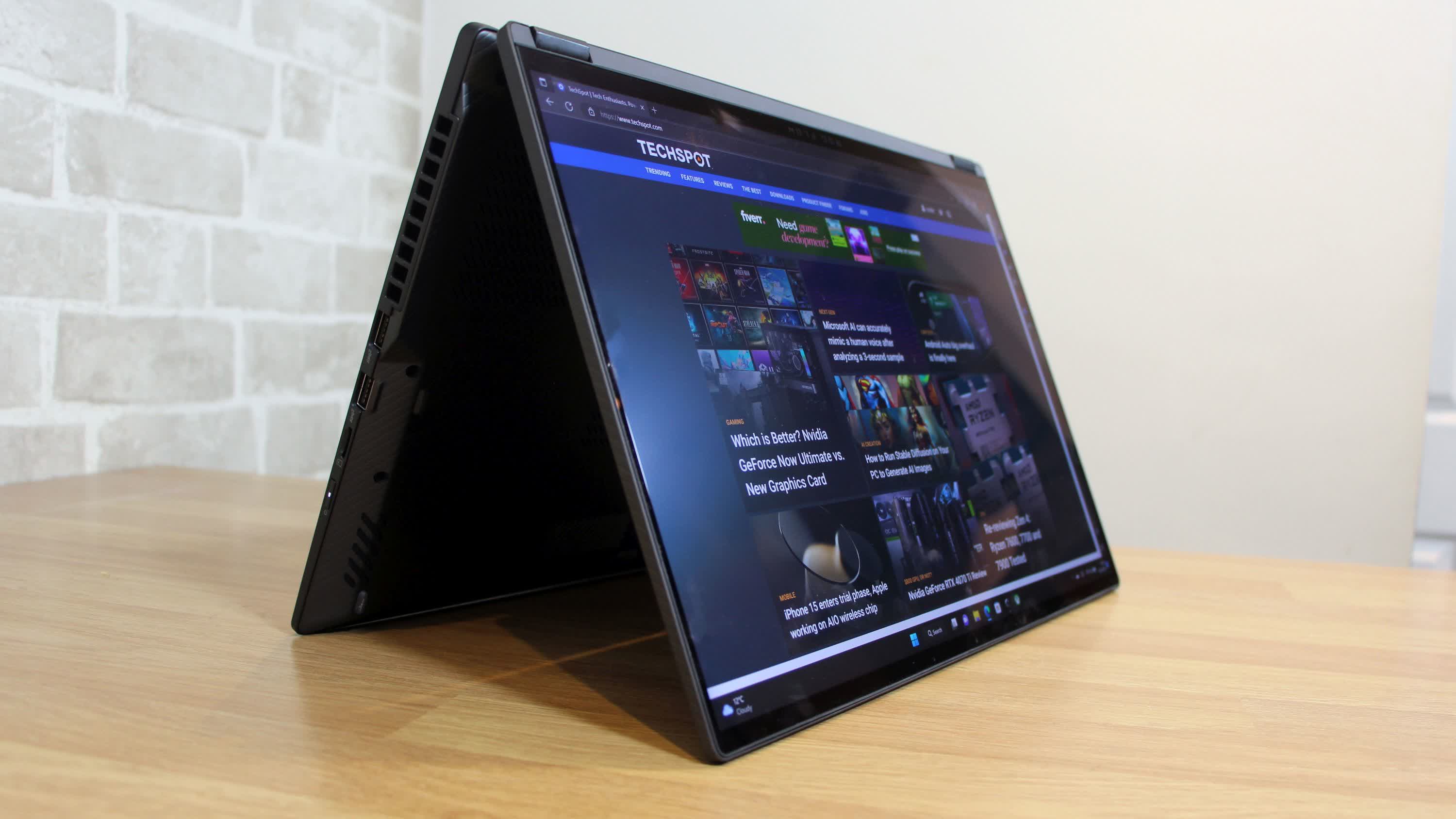

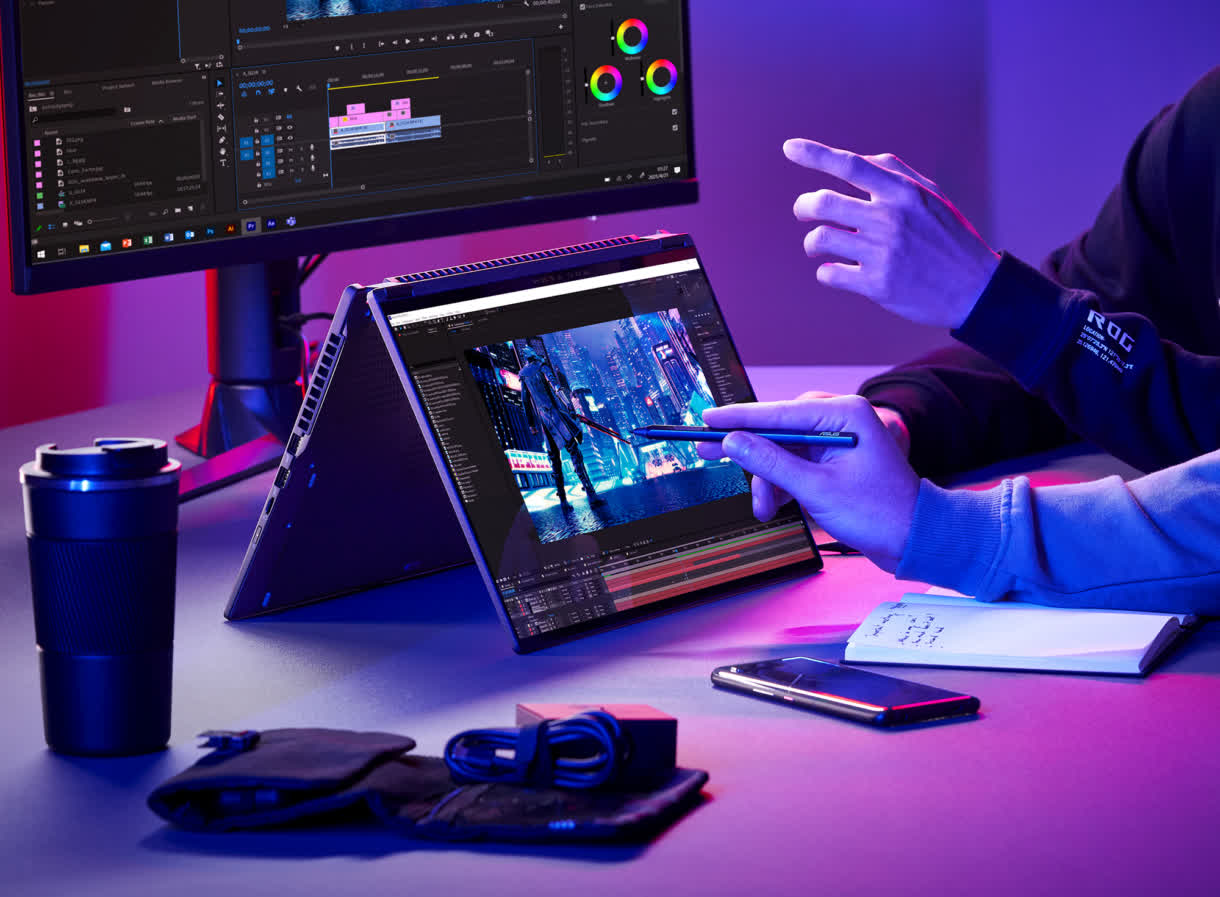

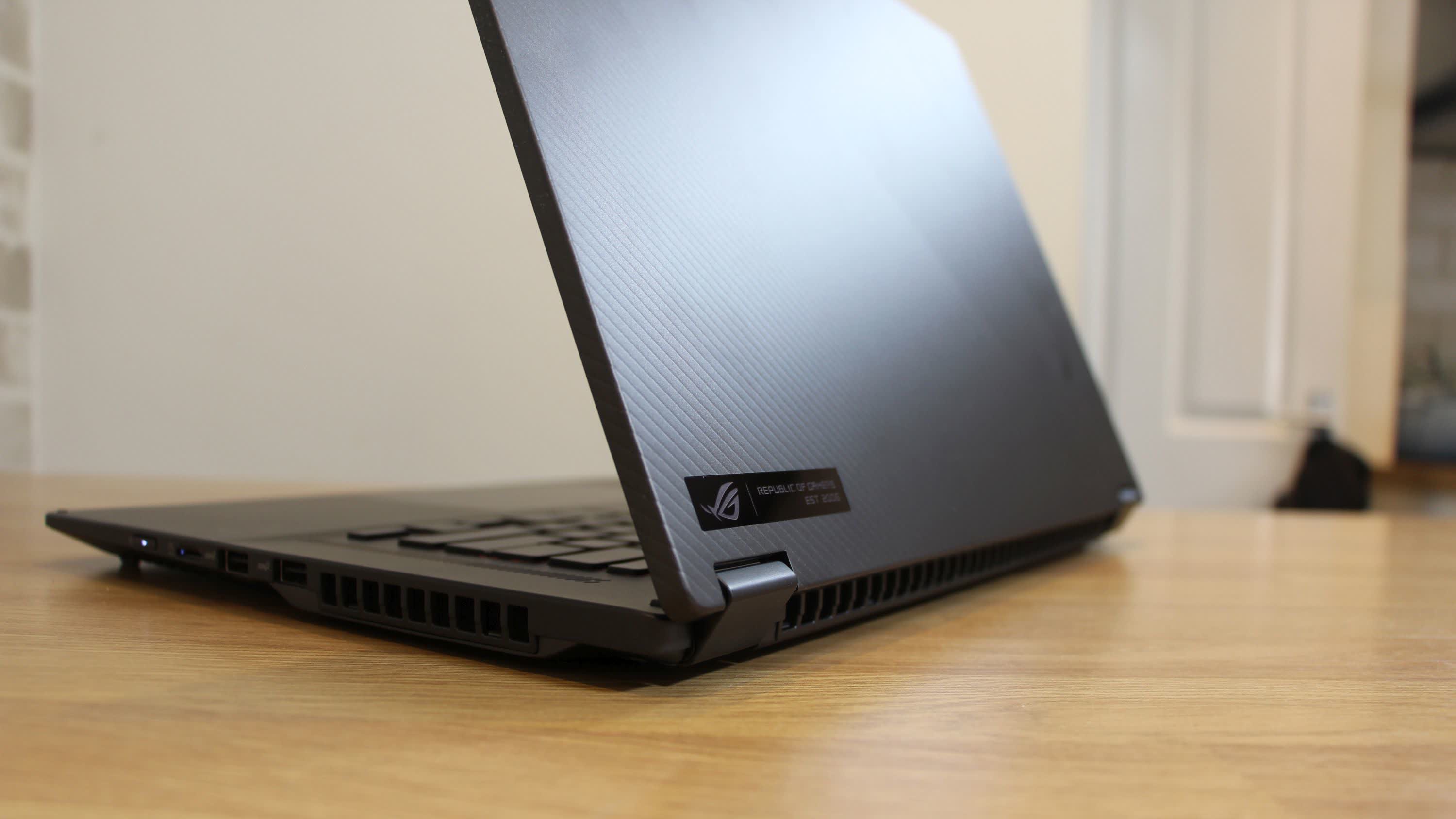
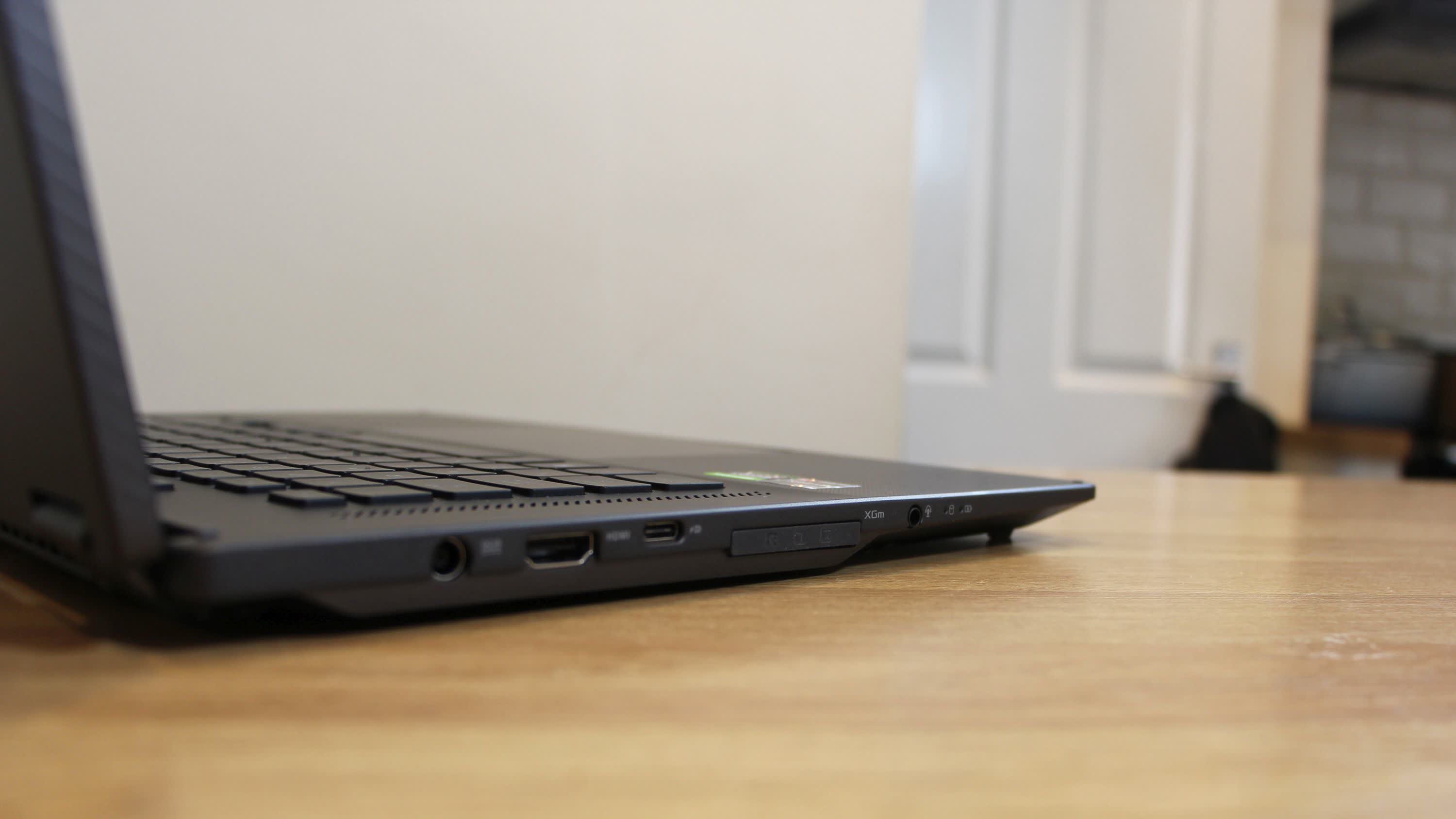
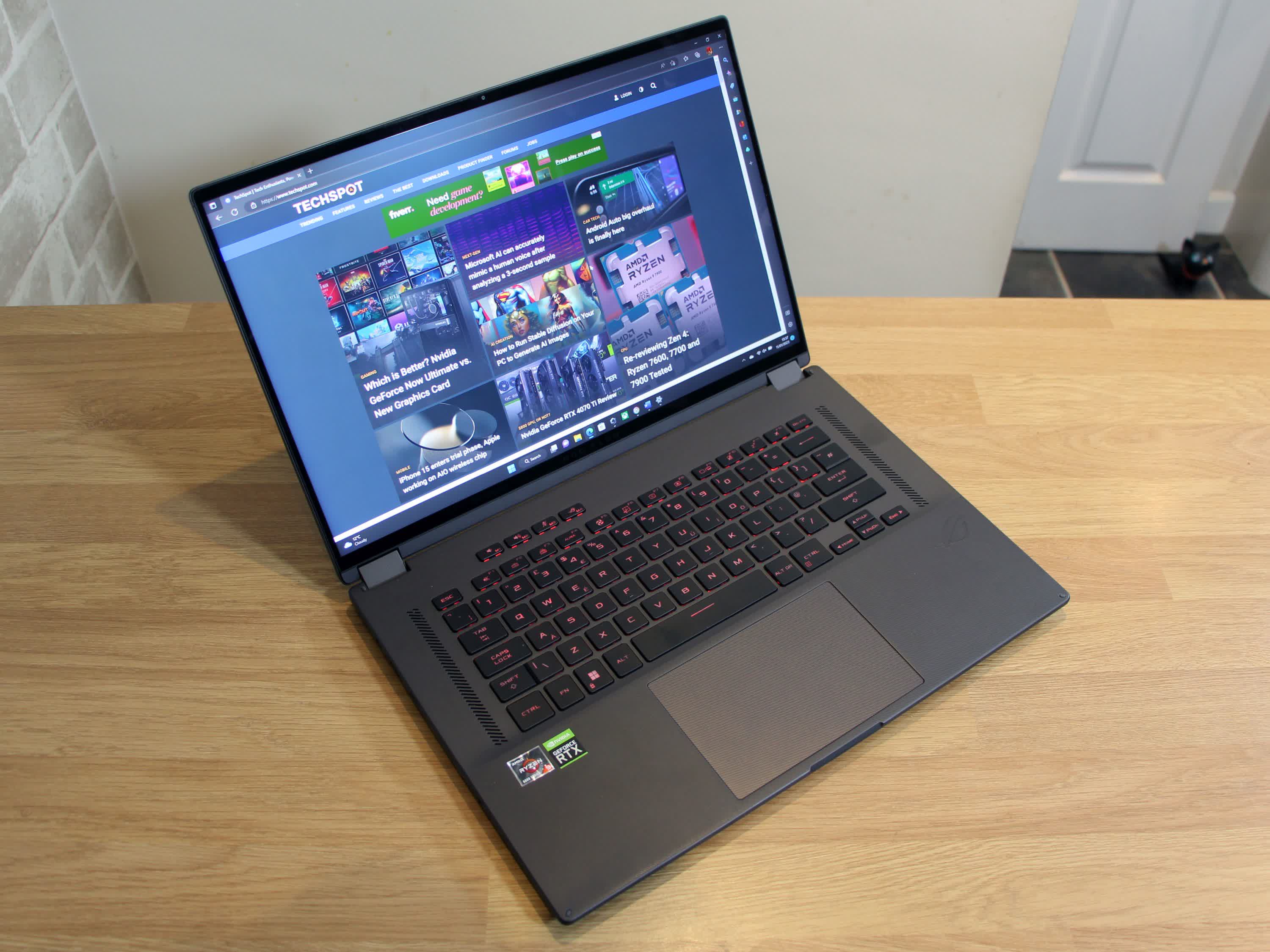
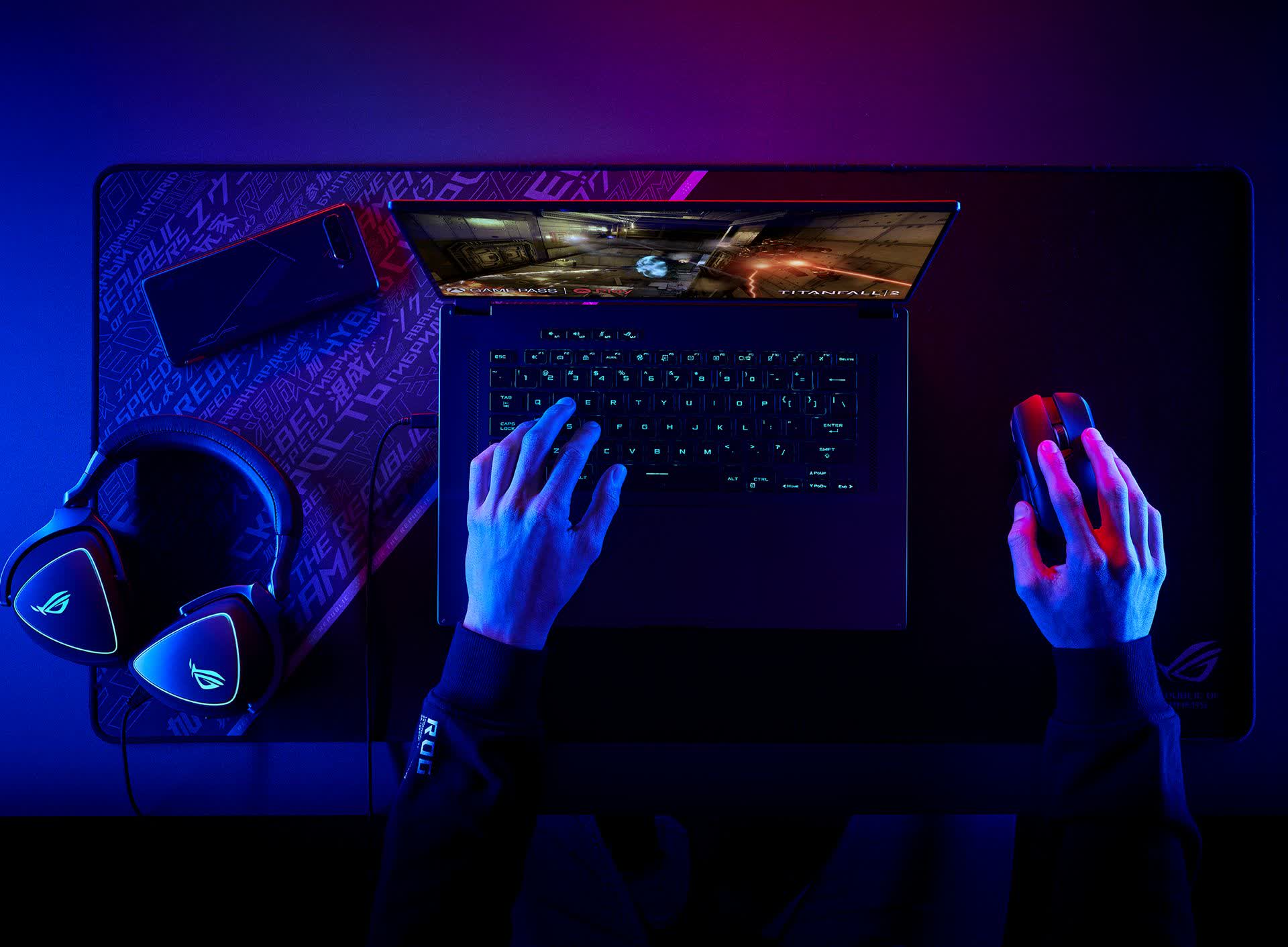
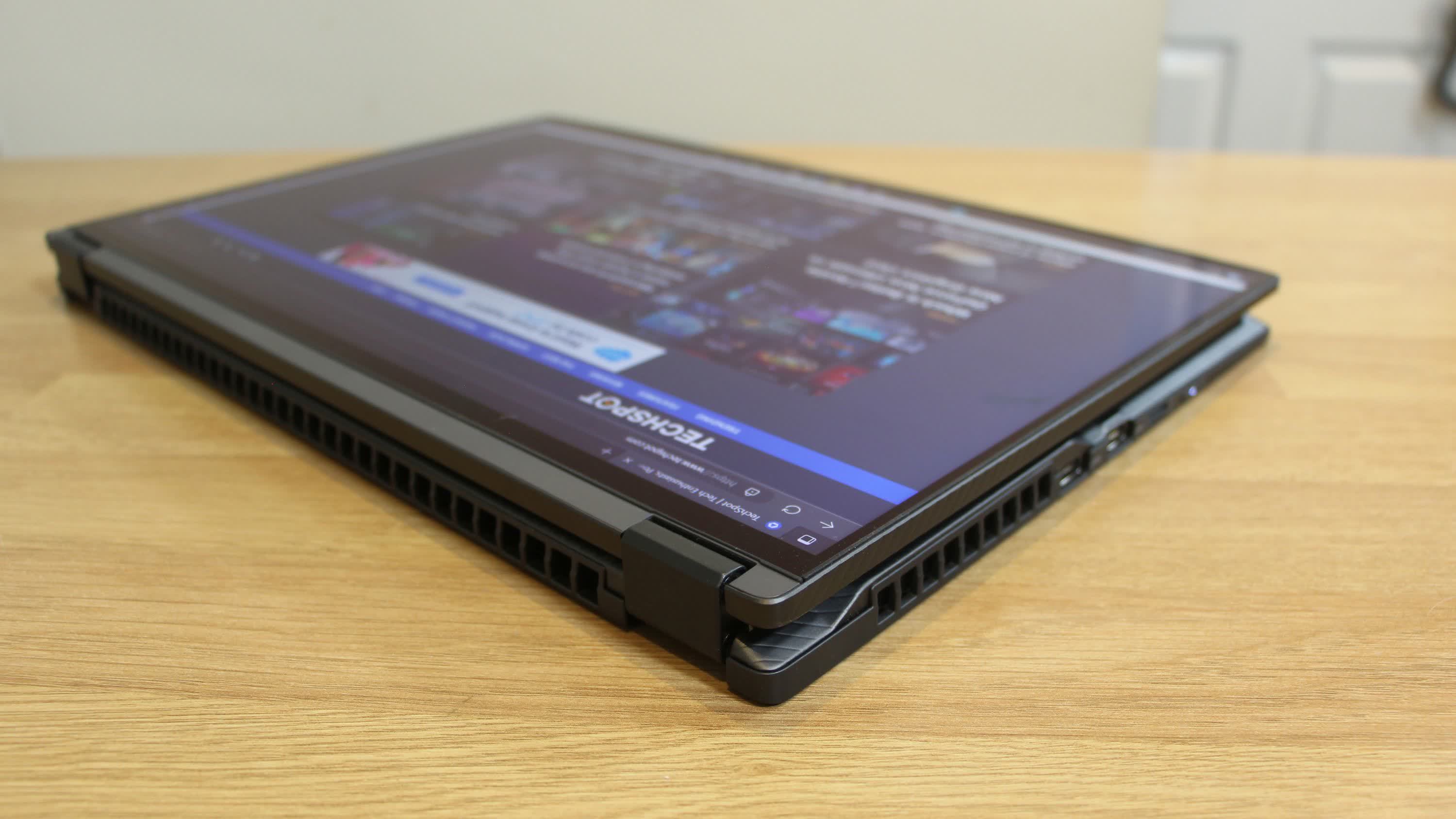
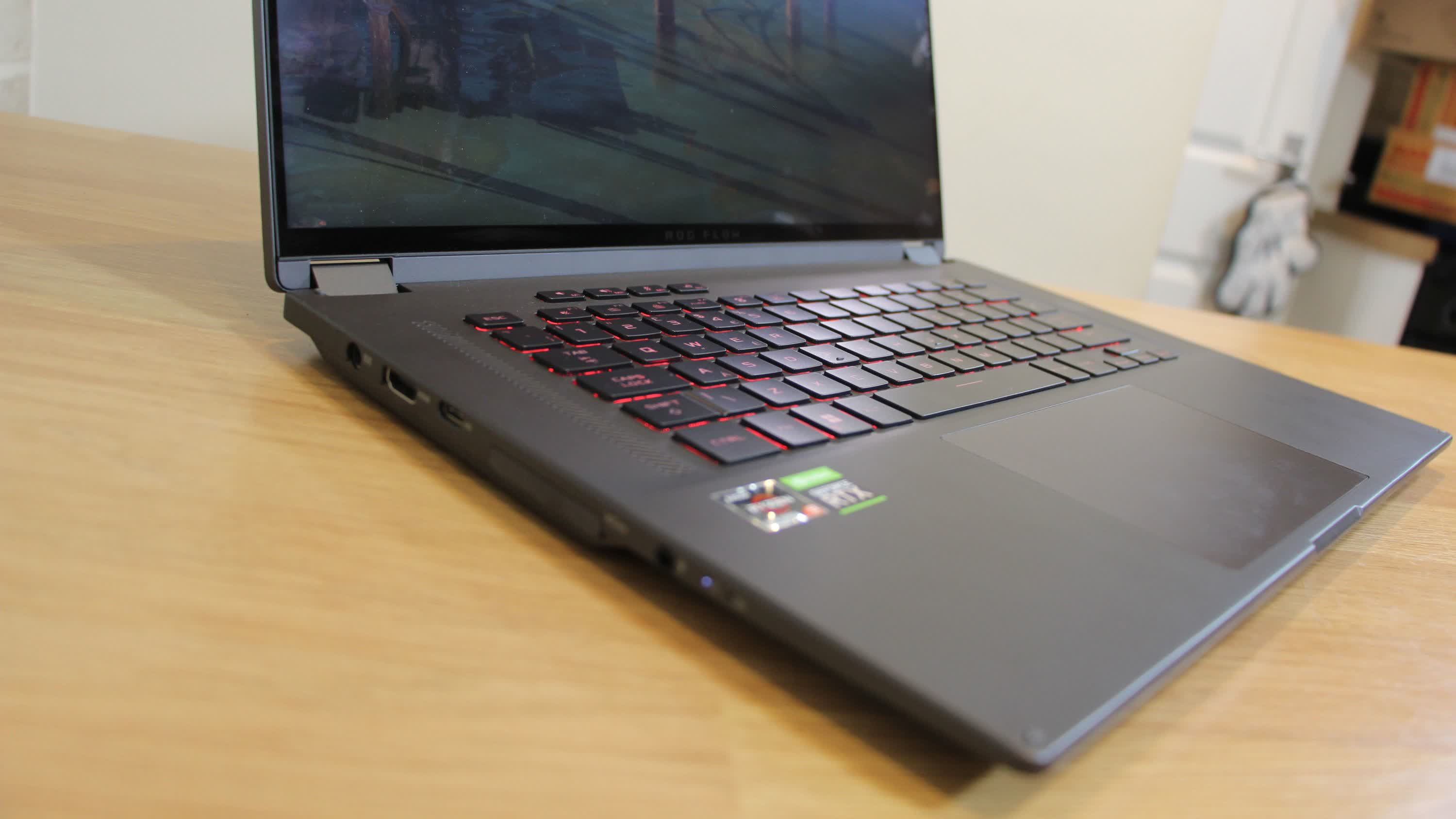
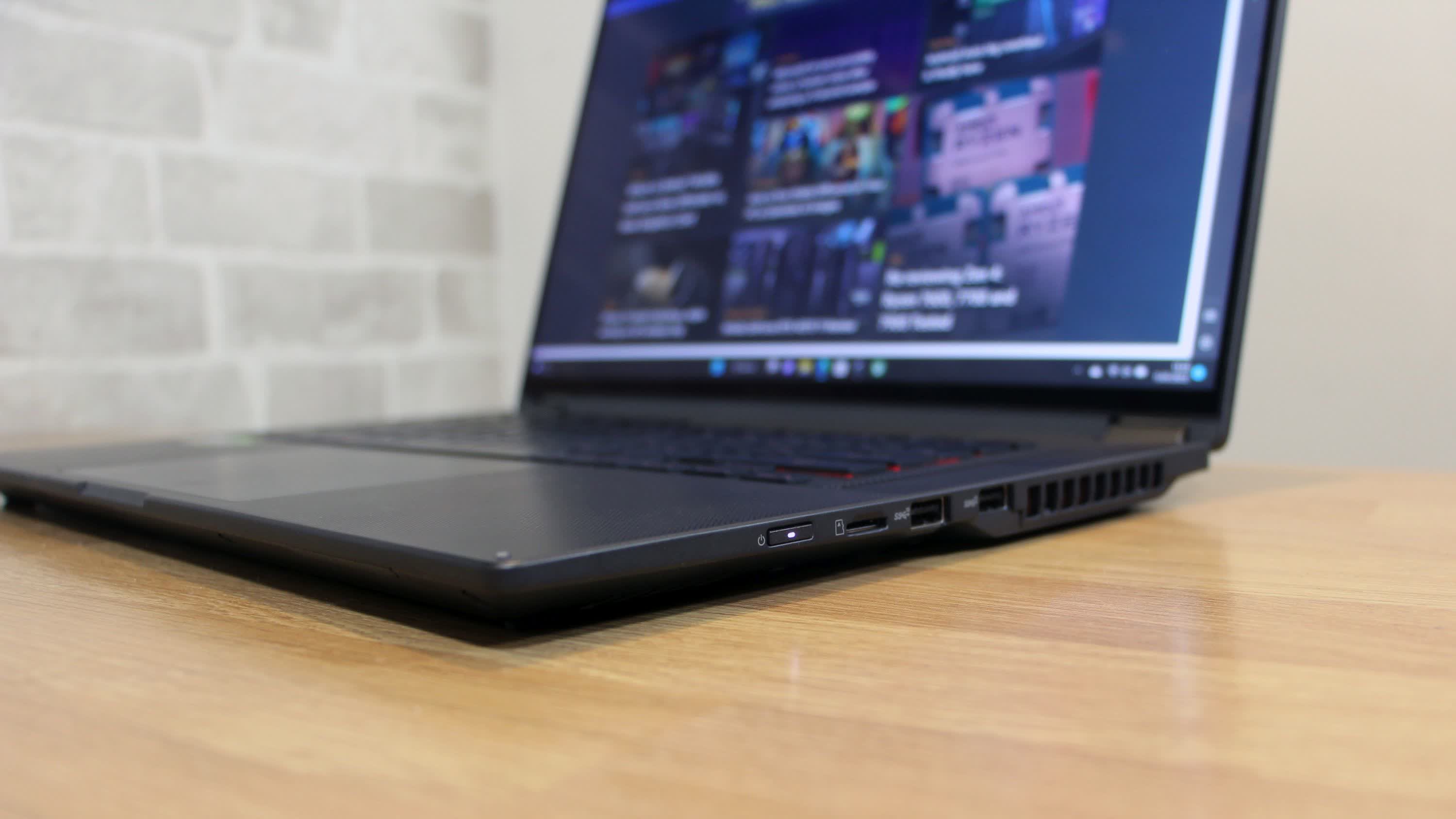
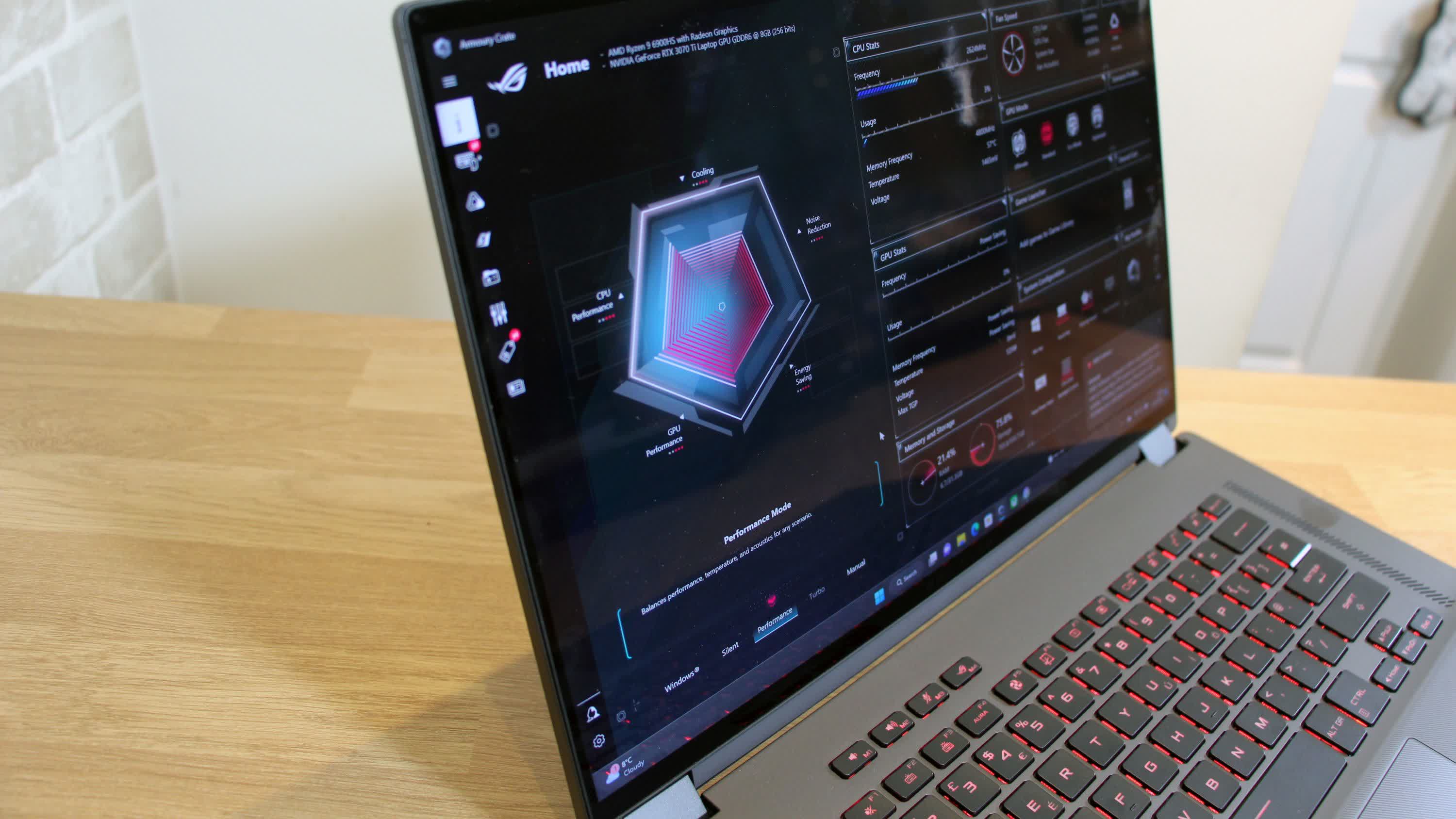
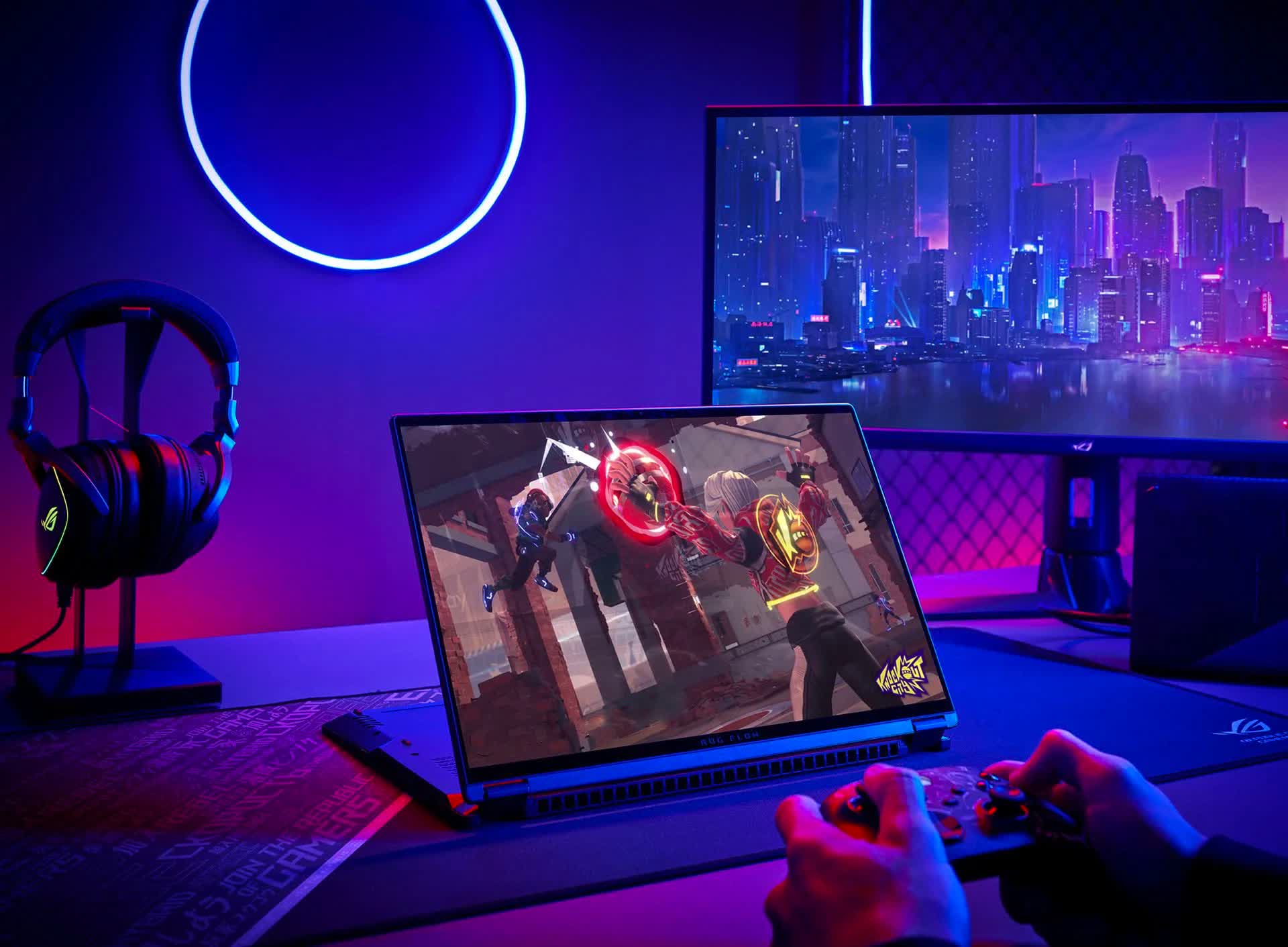














0 Response to "Asus ROG Flow X16 Gaming Laptop Review - TechSpot"
Post a Comment